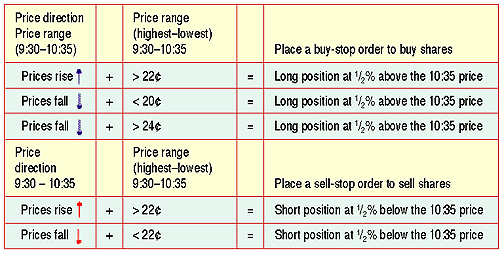Not Too Hot And Not Too Cold, Making Sure It's Just Right
Trading In The Middle Zone
by Anthony Trongone
Having trouble trading at the start of the day? This strategy will help you find your trading spot.
There are many articles about entering the market at the open; there are many articles about entering the market toward the close. Few articles, however, focus on trading during the middle portion of trading, which I'll call the "middle zone." This is unfortunate because this less glamorous time frame (10:35-14:55 Eastern time) represents two-thirds of the overall trading day. Although the opening of the trading session (65 minutes) is an environment replete with excessive price swings, it does provide us with the information necessary to profit in the middle zone (MZ).
Analyzing the previous 444 trading days supplies us with a formula for midday success. By incorporating the information from the opening one-sixth of the trading day, this system gives us the flexibility of taking either a long or short position in which 110 of the 158 tradable plays are successful.
When you are trading in an environment of dramatic price swings, it is easy to become susceptible to impulsive decision-making. If you begin the trading day with a loss, it is difficult to regain your equanimity. Without a winning strategy in place at the open, your best recourse is to refrain from trading until the market begins to indicate direction.
TRADING THE NASDAQ 100
The QQQQ can offer us a realistic opportunity for success because this popular exchange traded fund (ETF) replicates the movements of the NASDAQ 100, and therefore, we can transfer our knowledge to trading the NASDAQ futures contract with ease. With a daily average of 96.4 million shares, the QQQQ's findings are generally an accurate barometer of trading technology stocks with active volume.

FIGURE 1: THE FIVE TRADABLE PLAYS. When these two conditions come together we can take either a long or short position depending on early morning price direction.